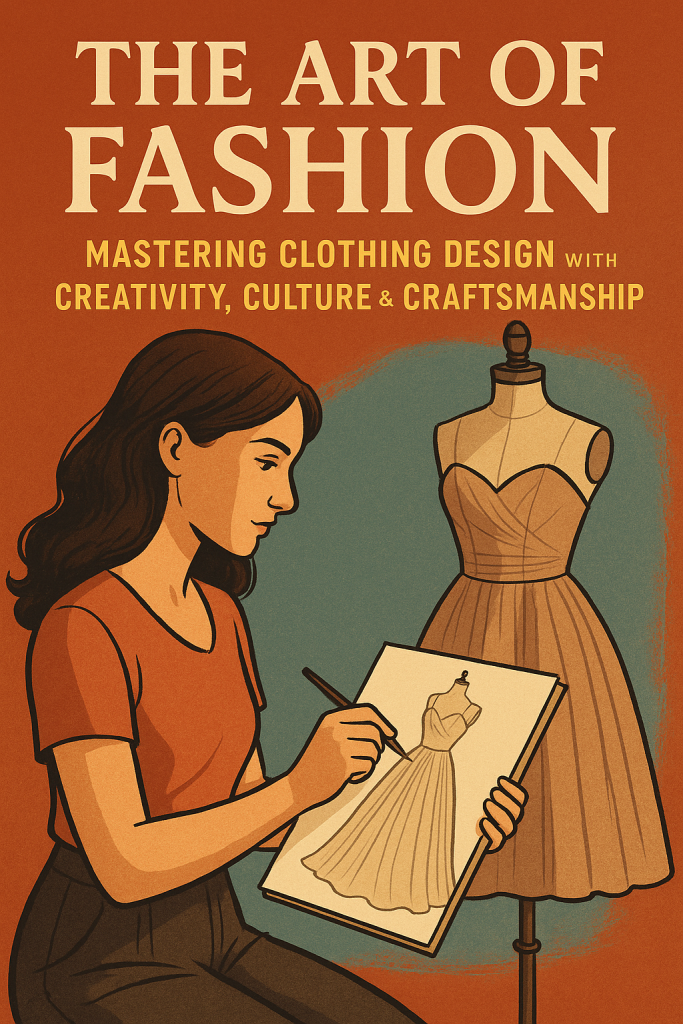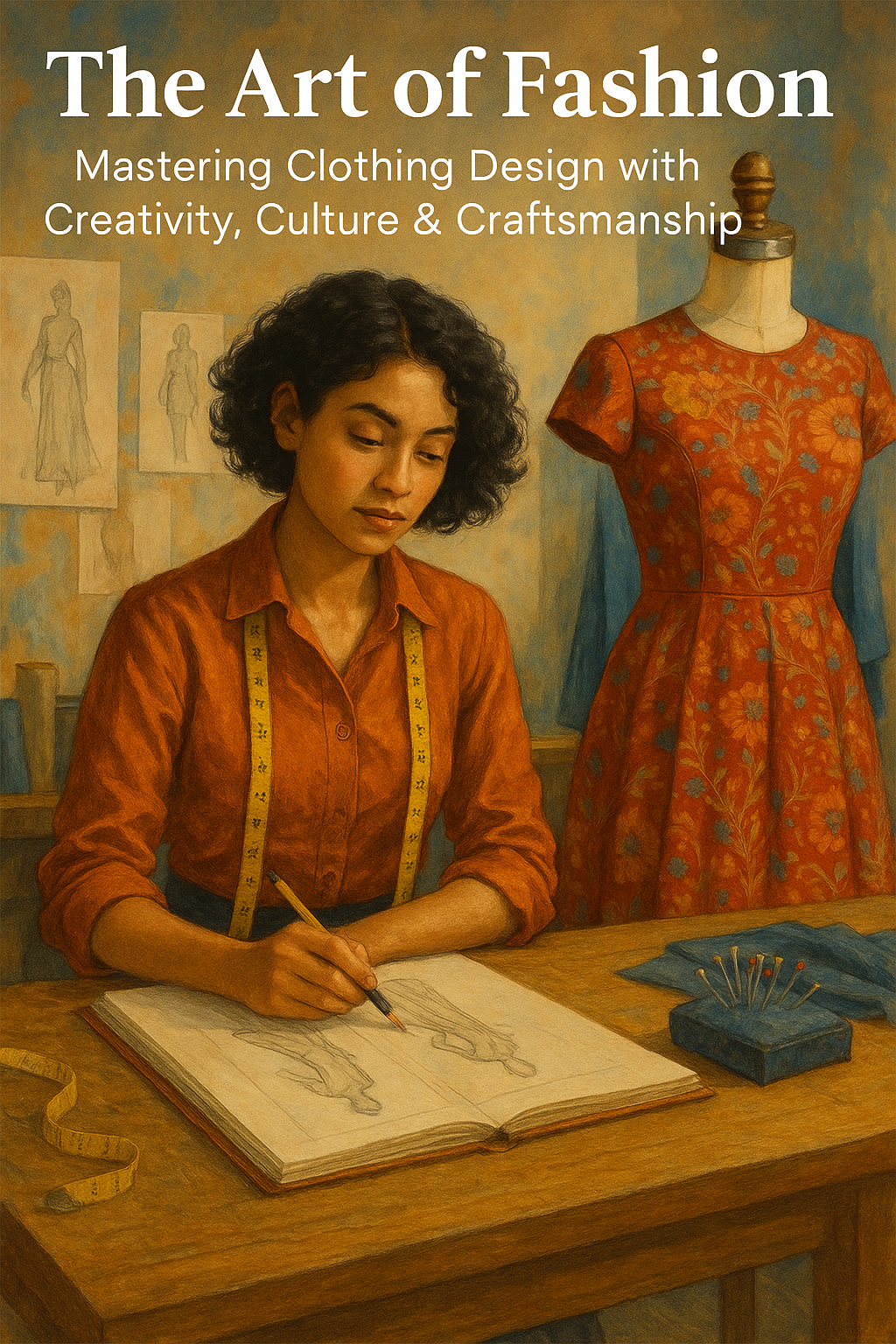The Art of Fashion: Mastering Clothing Design with Creativity, Culture & Craftsmanship
Clothing design is more than fabric, patterns, and stitches — it’s a form of self-expression, a cultural language, and a canvas where imagination meets function. Whether it’s haute couture or streetwear, the world of clothing design continues to shape trends, identities, and industries globally.

In this guide, we’ll explore what makes clothing design a powerful and evolving art form — from understanding the foundations to discovering the latest trends and secrets to becoming a successful designer.
What is Clothing Design?
Clothing design is the process of creating and conceptualizing garments, from sketching initial ideas to selecting fabrics, constructing patterns, and finalizing production. It blends creativity with technical skill, ensuring the clothing is both stylish and wearable.
It encompasses:
- Fashion Sketching: Visualizing garments on paper or digitally.
- Fabric Selection: Choosing the right materials based on texture, season, and theme.
- Pattern Making: Drafting templates to cut fabric accurately.
- Sewing & Construction: Bringing the design to life with precision.
- Fit & Functionality: Ensuring comfort, structure, and purpose.
Elements of Great Clothing Design
- Originality
- The best designs bring something new to the table. It could be a silhouette, embroidery style, or innovative material.
- Functionality
- Design should go beyond appearance. It must serve a purpose — whether it’s a breathable gym outfit or a dramatic bridal gown.
- Cultural Influence
- Designers often draw from cultural heritage. Indian motifs, Japanese silhouettes, or African prints all add richness to clothing.
- Sustainability
- Modern clothing design often includes eco-conscious materials, zero-waste techniques, and slow fashion principles.
- Detailing
- Buttons, stitches, pleats, zippers — even the smallest detail can elevate a piece.
Types of Clothing Design
- Haute Couture: Custom-made, luxurious, and often extravagant pieces.
- Pret-a-Porter (Ready-to-Wear): Designer clothes available in standard sizes.
- Streetwear: Influenced by youth culture and urban aesthetics.
- Traditional/Regional Wear: Ethnic designs based on cultural attire like sarees, kaftans, or kimonos.
- Functional Apparel: Uniforms, sportswear, or outdoor gear designed for specific uses.
Latest Trends in Clothing Design (2025 Edition)
- Gender-Neutral Fashion
Designers are moving toward inclusive clothing that blurs traditional gender lines. - Digital Fashion
Virtual outfits for avatars and augmented reality fitting rooms are revolutionizing fashion tech. - Sustainable Materials
Organic cotton, bamboo fabric, and recycled polyester are dominating runways. - Bold Prints & Patterns
Vibrant florals, geometric cuts, and mixed-media patterns are making strong statements. - Handcrafted Details
Embroidery, hand-painting, and artisanal beading are making a huge comeback in luxury segments.
Tips to Become a Successful Clothing Designer
- Study the Basics
Learn garment construction, fashion history, and textile science. - Keep a Design Journal
Sketch daily. Keep notes on trends, textures, or ideas that inspire you. - Master Fabric Knowledge
Understand how each fabric drapes, reacts to stitching, and blends with others. - Know Your Market
Are you designing for teens, professionals, brides, or travelers? Your audience determines your approach. - Intern & Network
Gain real-world experience through internships and fashion events. - Embrace Technology
Use tools like Adobe Illustrator, CLO 3D, and digital sketch pads to bring your designs to life.
Top Inspirations for Designers
- Nature: Leaves, animals, landscapes.
- Architecture: Symmetry, structure, lines.
- Culture & Traditions: Festive wear, rituals, heritage.
- Emotions & Stories: Expressing themes like freedom, rebellion, or nostalgia through fashion.
Clothing Design as a Career
Fashion is not just an industry; it’s a global language. From working with global brands to launching your own label, career paths include:
- Fashion Designer
- Pattern Maker
- Fashion Illustrator
- Textile Designer
- Stylist or Costume Designer
- Fashion Entrepreneur
And with the rise of e-commerce and social media, it’s easier than ever to showcase your work to the world.
Clothing design is the intersection of imagination, craftsmanship, and culture. It’s where identity meets innovation. Whether you’re sketching your first outfit or preparing for a fashion week debut, remember that great design always tells a story — and your story matters.














Post Comment